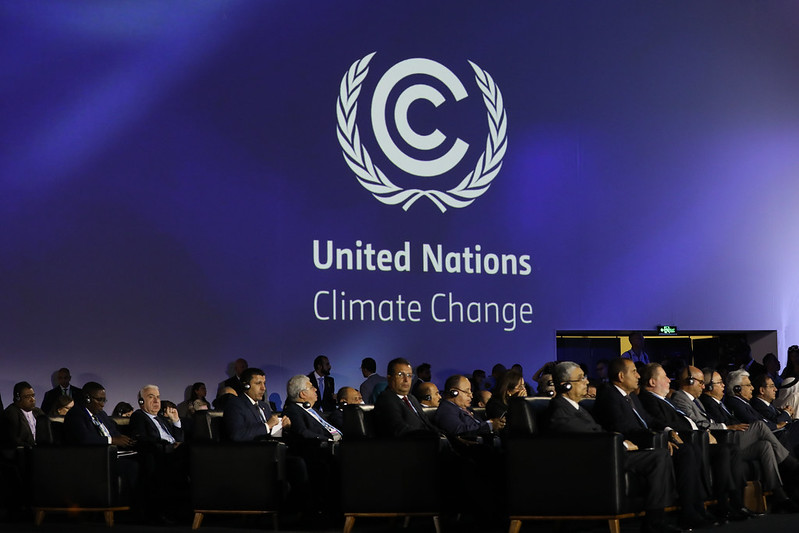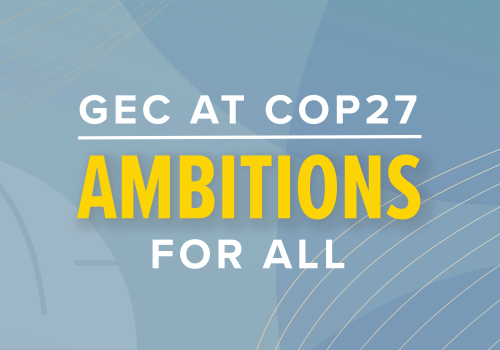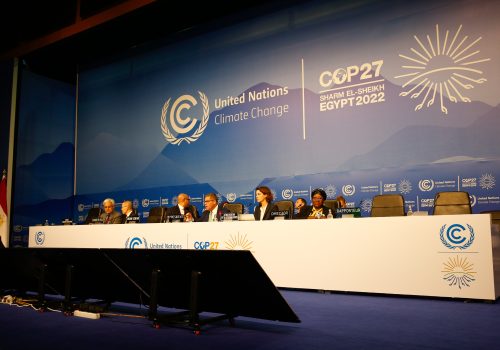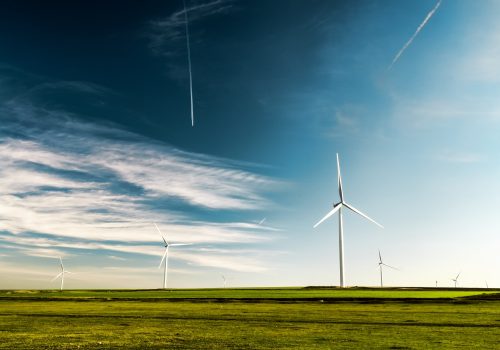In this pivotal moment for global action on climate change, I’m in the full optimist camp regarding COP27 in Sharm el Sheikh—not only for Egypt, but for the precedent Egypt is setting for the future.
Two main reasons drive this enthusiasm. First, COP27 is focused on implementation—putting climate promises into action. Second, the event is committed to highlighting the needs and challenges of emerging economies. This will place a global spotlight on the unique opportunities for countries where most of the 750 million people without reliable access to electricity live.
The rise of emerging economies in leading climate action
Emerging economies increasingly are at the center of solving for climate change and ensuring a just transition. And rightfully so. They are already feeling the impacts of climate change and taking steps to protect their people. And they want and should be invested in being part of the innovation to lead a just transition.
To solve for climate change and achieve a just transition across the planet, it’s important to remember there’s no one-size-fits-all approach. Each country, depending on its specific situation, will deploy its own mix of the tools to achieve the energy transition while at the same time growing access to reliable, sustainable, and affordable energy for everyone. Being present in 175 countries, that’s something GE focuses on every day with its customers and government partners. What that means is that governments and corporate partners must tailor their approaches, policies, and technologies to meet the needs of each market.
Here, Egypt serves as a key proof point both at COP27 and beyond. Thanks to a strategic cooperation agreement among the Egyptian Electricity Holding Company (EEHC), GE, Hassan Allam Holding, and Power Generation Engineering and Services Company (PGESCO), GE will run a LM6000 gas turbine at the Sharm el Sheikh Power Plant on a hydrogen/natural gas fuel blend. The project in Egypt will be the first time that the LM6000 technology is expected to run on hydrogen-blended fuel on the African continent. Beyond this COP27 milestone, GE Gas Power signed a memorandum of understanding with EEHC to develop a roadmap to reduce carbon emissions from EEHC’s fleet of gas turbines. On the table are the potential applications of carbon capture, the development of hydrogen blended fuels, and the conversion of simple cycle power plants to combined cycle.
In many markets, countries are building grid and power infrastructure so they can deploy increased renewables. This includes coal-to-gas transition using innovative solutions like high-efficiency gas turbines. In South Africa, gas will provide the baseload capacity for their Coal Repurposing Program—a fuel switch that cuts power plant emissions in half. In the future, breakthrough technologies such as hydrogen fuel and carbon capture can reduce net emissions from those gas turbines further.
Increasingly in emerging economies, renewables are an important near-term aspect of the energy mix. Turkey has reached over 10 gigawatts (GW) of wind power capacity. In India, where wind speeds are relatively low, GE’s India Technology Center in Bangalore developed a special wind turbine that has been deployed at numerous wind farms across the country.
In many markets, a mix of energy solutions will contribute to long-term electrification and decarbonization. Tactics toward these ends include improving the grid; reducing the use of diesel generators by expanding access to and the efficiency of thermal assets; and increasing renewable energy generating assets.
So while Egypt is raising attention on decarbonizing and growing energy security in emerging economies, there are many proof points in Africa and beyond showing implementation—the goal of COP27.
Progress through partnerships and proof points
As a driver to help achieve implementation and climate action in emerging economies, another COP27 transformation is the rapidly growing role of public-private partnerships between policymakers and corporate stakeholders. The growing role of companies to be part of the solution and partner with governments, NGOs, and other companies in industrialized and emerging markets is leading to unprecedented collaborations, some already having an impact.
The pursuit of public-private partnerships is perhaps the top undercurrent at COP27, as many collaborators and odd bedfellows alike come together for bold pronouncements of projects and initiatives together. These examples demonstrate how emerging economies, through public-private partnerships and tangible proof points, are addressing the energy transition by blending different approaches, technologies, and perspectives. Additionally, they illustrate how emerging economies are positioning strategically to build climate resilient infrastructure that grows access to energy at the same time. The lessons learned from each will help inform the many ongoing discussions and negotiations in Sharm el Sheikh.
I’m excited about how Egypt rightly has placed focus on partnerships and inclusivity and the action it will yield around the globe. I’m confident that this broad, truly global perspective will help foster lasting progress toward shared climate goals and guide collective implementation activities in the months and years ahead.
Roger Martella is the chief sustainability officer of GE. GE is a presenting partner of GEC at COP27: Ambitions for All.
Related content
Learn more about the Global Energy Center

The Global Energy Center develops and promotes pragmatic and nonpartisan policy solutions designed to advance global energy security, enhance economic opportunity, and accelerate pathways to net-zero emissions.
Image: UN COP27 (Kiara Worth, UNFCCC, Flickr, CC BY-NC-SA 2.0) https://creativecommons.org/licenses/by-nc-sa/2.0/




